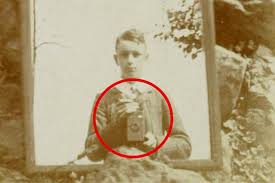The First Photograph Ever Taken
Photography, as we know it today, has come a long way since its humble beginnings. The first photograph ever taken is a historic moment that marked the dawn of a new era in visual communication.
In 1826, French inventor and artist Louis Daguerre captured the world’s first photograph using a process known as the daguerreotype. The image, titled “View from the Window at Le Gras,” depicts a simple scene of buildings and rooftops against the sky.
While the photograph may seem unremarkable by today’s standards, its significance cannot be understated. It represented a groundbreaking achievement in capturing and preserving images for posterity.
The daguerreotype process involved exposing a silver-coated copper plate to light and then treating it with chemicals to fix the image. This revolutionary technique paved the way for the development of modern photography as we know it.
Today, photography has evolved into a powerful medium that shapes our perceptions, documents history, and captures moments of beauty and truth. The first photograph ever taken remains a testament to human ingenuity and our enduring fascination with capturing the world around us.
As we look back on this historic milestone, we are reminded of the transformative power of photography and its ability to transcend time and space to connect us with our past and inspire us for the future.
Exploring the Dawn of Photography: Insights from the First Photograph Ever Taken
- The first photograph ever taken was captured by Joseph Nicéphore Niépce in 1826 or 1827.
- The photograph, known as ‘View from the Window at Le Gras’, was taken using a camera obscura and required an exposure time of about 8 hours.
- Niépce used a pewter plate coated with bitumen to capture the image, which resulted in a permanent record of the scene.
- The first photograph marked the beginning of photography as we know it today, paving the way for further advancements in the field.
- This historic image is now preserved in a museum and serves as a testament to the origins of photography.
- Studying the first photograph ever taken can provide valuable insights into the evolution of photographic technology and techniques over time.
The first photograph ever taken was captured by Joseph Nicéphore Niépce in 1826 or 1827.
The first photograph ever taken was captured by Joseph Nicéphore Niépce in either 1826 or 1827. This pioneering achievement marked a significant moment in the history of photography, showcasing the innovative spirit and technical skill of Niépce. Through his experimentation and dedication, Niépce laid the foundation for the development of photography as a powerful medium of visual expression and documentation. His groundbreaking work continues to inspire generations of photographers and artists, highlighting the enduring impact of that historic image captured over two centuries ago.
The photograph, known as ‘View from the Window at Le Gras’, was taken using a camera obscura and required an exposure time of about 8 hours.
The photograph, famously titled ‘View from the Window at Le Gras’, holds a remarkable distinction as the first-ever photograph taken in history. Captured using a camera obscura, this pioneering image demanded an astonishingly long exposure time of approximately 8 hours. This technical feat highlights the patience and dedication required in the early days of photography, where each image was a testament to the meticulous craftsmanship and innovative spirit of its creator.
Niépce used a pewter plate coated with bitumen to capture the image, which resulted in a permanent record of the scene.
In the pioneering days of photography, Niépce’s ingenious use of a pewter plate coated with bitumen marked a pivotal moment in the history of visual documentation. By employing this innovative technique, Niépce was able to create a lasting and unchanging record of the scene he captured, laying the foundation for the evolution of photography as a means to preserve moments in time with remarkable precision and permanence.
The first photograph marked the beginning of photography as we know it today, paving the way for further advancements in the field.
The first photograph, capturing a simple scene in 1826, marked the beginning of photography as we know it today. This historic moment not only preserved a fleeting image but also paved the way for further advancements in the field. The breakthrough daguerreotype process used to create this image set the foundation for modern photography, demonstrating the transformative power of capturing moments in time with precision and clarity.
This historic image is now preserved in a museum and serves as a testament to the origins of photography.
This historic image, the first photograph ever taken by Louis Daguerre in 1826, is now carefully preserved in a museum, where it stands as a testament to the origins of photography. Displayed for all to see, this pioneering work of art serves as a poignant reminder of the humble beginnings of a medium that has since revolutionised how we capture and immortalise moments in time. Its presence in the museum not only honours the ingenuity of Daguerre but also pays homage to the rich history and evolution of photography as an art form and a means of storytelling.
Studying the first photograph ever taken can provide valuable insights into the evolution of photographic technology and techniques over time.
Studying the first photograph ever taken can provide valuable insights into the evolution of photographic technology and techniques over time. By examining the pioneering work of Louis Daguerre and his groundbreaking daguerreotype process, we gain a deeper appreciation for the innovation and experimentation that have shaped the art of photography. Understanding the origins of photography allows us to trace its development through various technological advancements and creative approaches, highlighting how far we have come in capturing images and preserving moments in history.

